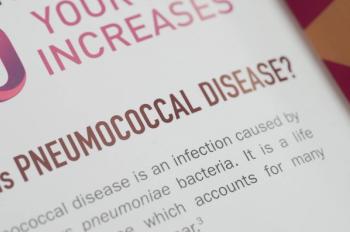
- Drug Topics June 2019
- Volume 163
- Issue 6
On the Road to Provider Status
Billing solutions and entrepreneurs needed.
Do you want to be recognized as a healthcare provider? Or do you want to get paid for the clinical services you provide? It’s a trick question that has brought years of confusion as pharmacy fights to achieve provider status.
“At the federal level, ‘provider status’ describes access to Medicare Part B,” says
Pharmacists are already classified as providers in most states, Weaver says. But what that means depends on just where in state law pharmacists are classified as providers. It depends on pharmacists’ scope of practice under state law. And most importantly, it also depends on what states do or do not require in terms of reimbursement for pharmacist services.
Trending:
Many states are silent on reimbursement. Other states require pharmacists to be paid for services provided under state employee health plans or Medicaid.
For example, the Washington state legislature dramatically expanded pharmacist scope of practice in 1979, allowing for collaborative practice agreements (CPAs) across a broad range of activities. There are currently more than 33,000 active CPAs across Washington in prevention, wellness, immunizations, disease state management, opioid management, HIV pre-exposure prophylaxis, and other areas.
“What we found is that while we were able to provide the care, we were not necessarily able to be paid for care under either the medical benefit or the pharmacy benefit in commercial health plans,” says
“If, in fact, the services a pharmacist is providing are going to benefit the medical side of the equation, then there should be claims under the medical benefit. That’s the real provider status conversation.”
The WSPA worked with the state legislature to require private insurers to include pharmacists in provider networks in 2015.
If a medical service is covered when provided by a physician, nurse practitioner, or other traditional provider, it must also be covered if provided by a pharmacist, as long as the service is within the pharmacy scope of practice.
Billing Solutions Needed
WSPA’s legislative win in 2015 was only the first step in getting paid. The real barrier was figuring out the mechanics of submitting successful medical claims.
“Once we had the legal side, we had to learn how other providers do things,” Rochon says. “There was quite a bit of knowledge to be gained in understanding credentialing and contracting, and enrollment in health plans as individual pharmacist providers. There was understanding how to submit a medical claim, who to submit it to, the whole language and practice of ICD 10 and CPT codes, and documentation.
Read More:
“There is the IT side, how do we communicate, not only with the health plan, but with other providers so there is continuity of care? And there is the outcomes side, showing that pharmacists are meeting the same quality measures that doctors and hospitals and clinics are held to. The thumbnail is that we have had to learn how other providers bill claims for medical services and meet the same provider obligations as physicians, nurse practitioners, and everyone else in the medical system.”
Ambulatory care pharmacists are routinely paid for services, Rochon reported. Pharmacists were already managing patients for opioid use, anticoagulation, behavioral health, oncology, and other areas. Health systems have an existing support system to help other providers in billing that pharmacists could use.
Pharmacists in primary care are also billing successfully for office visits. Community pharmacy has been slower to bill because there was no preexisting mechanism for medical claims in prescription dispensing software. Now, more community pharmacies bill medical claims as more IT solutions come to market.
Continue reading on page 2...
Entrepreneurs Needed
North Carolina went another route. The state gives pharmacists broad leeway to practice under clinical services agreements with physicians, but is silent on payment. That hasn’t stopped
She is one of more than a dozen clinical pharmacists at Rx Clinic Pharmacy in Charlotte who spend 100% of their time in direct patient care.
“It is all about entrepreneurship,” Bentley says. “Sometimes a practice leases pharmacist services by the hour or the day. It can be anything from prior authorizations to dealing with questions from dispensing pharmacists, coordinating care, managing therapy, anything medication related.”
Trending:
“Other times it is a fee-for-service model where we bill for the practice and share financial risk. That means you learn the ins and outs of billing and coding for medical claims,” she says. “There are shared revenue arrangements where we keep a percentage of the gross revenues we bill and bring in. And there are more familiar services-diabetes education, DME, insulin pump training-a host of clinical services provided by pharmacists and billed by pharmacists. Being able to bill third-party payers directly for all of our services would be nice, but it’s really about working at the top of your license and getting creative with business models to get paid for it.”
Washington is the model in terms of payment for services, Weaver says. But Idaho is the model for scope of practice. Idaho will now allow pharmacists to prescribe for anything that does not require a diagnosis, a broad swath of preventive services, and any condition that has already been diagnosed.
“Once the law is implemented, a physician could write a diagnosis on a prescription pad and a pharmacist could manage the patient’s therapy based on that diagnosis,” she says.
Moving on Multiple Levels
There are more than 100 provider status bills pending in 34 states for 2019, Weaver says.
On the federal level, a provider status bill introduced in the last Congress had more than half of both houses as cosponsors, but the bill still foundered. A new bill will likely be introduced before the summer recess, says
“APhA is part of a larger effort, the Patient Access to Pharmacists’ Care Coalition, with heath system pharmacists, community pharmacists, chain pharmacists, and other groups,” she says. “We are not trying to be the sole point of care, we are there in areas where there are no other providers. In areas that don’t have a lot of physicians, pharmacist access means a lot.”
Read More:
Pharmacist access also means a lot in areas with plenty of providers. Washington may have the broadest access to pharmacist reimbursement for services, but WSPA is still pushing for federal provider status.
“Until we get federal provider status, patients that have Medicare don’t have the same access to pharmacists as other patients,” Rochon says. “We have to have federal provider status as well as state-level changes if we are going to be able to provide care to all our patients.”
Articles in this issue
over 6 years ago
Opinion: Data is a Vital Resource in Fighting the Opioid Crisisover 6 years ago
Why Technology Upkeep is Up to Youover 6 years ago
Five Tech Best Practicesover 6 years ago
New Drug Review: Zulresso (Brexanolone)over 6 years ago
Opinion: The Future of Pharmacyover 6 years ago
Discount Drug Cards Are Flourishingover 6 years ago
How to Keep Your Professional Development Currentover 6 years ago
10 Ways to Boost Customer Loyaltyover 6 years ago
Opinion: PharmD Quality vs Quantityover 6 years ago
Five Tips for Evaluating Clinical StudiesNewsletter
Pharmacy practice is always changing. Stay ahead of the curve with the Drug Topics newsletter and get the latest drug information, industry trends, and patient care tips.



























































































































































